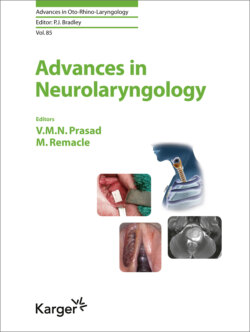Читать книгу Advances in Neurolaryngology - Группа авторов - Страница 39
На сайте Литреса книга снята с продажи.
Topical Anesthesia
ОглавлениеThe use of 2–4% lidocaine applied topically to the surface of the larynx opens up the possibility of a close view. This can be dripped onto the larynx during phonation leading to a laryngeal gargle. I find that use of 4 mL of 4% lidocaine applied in aliquots of 1 mL each, consistently yields excellent topical anesthesia. Typically, the first drip leads to vigorous coughing. After 10 and 15 s, the patient is typically able to produce an /i/ sound and maintain it while the topical anesthetic bubbles in the laryngeal introitus. If not by the second drip, then by the third or fourth there is typically nearly complete topical anesthesia.
There are other applicators such as the MAD (mucosal atomization device) which generate and distribute a spray around the pharynx. A thin flexible catheter may be placed to the nose to apply topical anesthesia. In patients with a severe gag reflex, the topical anesthesia may be applied through a 25-gauge needle inserted through the cricothyroid space. The ensuing spontaneous cough will distribute the local anesthesia in both the subglottic and supraglottic areas. Perhaps the most expensive, but easiest way is with a working channel laryngoscope through which the lidocaine is squirted while the endoscope is held over the vocal cords. Again, prolonged phonation while applying the anesthetic generates a laryngeal gargle and more sustained anesthesia.
Notably, topical anesthesia does not alter vocal cord motion.
